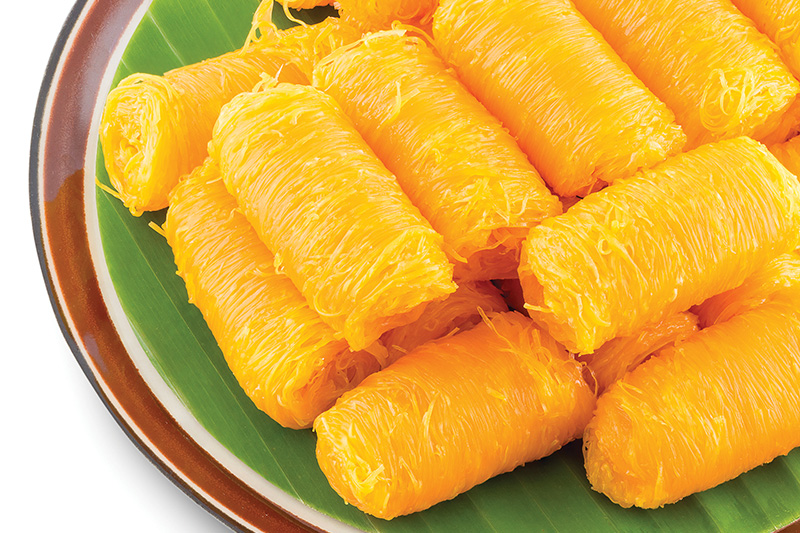
A Golden Sweet Legacy
From ancient royal courts to modern restaurants, gleaming strands of Foi Thong
delight eyes and palates to this day
Words Sarita Urupongsa
Photo Shutterstock
Shimmering strands of golden sweetness, Foi Thong whispers tales of the grand court of King Narai the Great in the Ayutthaya era. Up until the 17th century, eggs rarely featured in Thai desserts. But the arrival of Portuguese traders sparked a culinary revolution, launching egg-centric sweets that transformed Thai confectionery. Foi Thong – “golden threads” in Thai and “fios de ovos” in Portuguese – are a shining example of this wonderful fusion.
Symbolising prosperity and abundance, Foi Thong usually graces plates on joyous occasions like weddings and festivals. The dessert’s long delicate golden strands, crafted from rich duck and chicken yolks, sparkle with syrupy sweetness.
This deceptively simple to make dessert relies almost wholly on the quality of its ingredients: duck or chicken eggs, sugar, jasmine-infused water and fragrant pandan leaves. The key lies in separating the yolks carefully and straining them to a silken perfection.
The recipe begins with a syrup infused with fragrant jasmine water and pandan, simmered in a brass pan until it forms a gently bubbling bath. The magic unfolds as strained yolks are delicately drizzled through a sieve into the hot syrup – the fineness of the threads depending on height from which they fall. The cooked golden strands are then delicately lifted from the pan, allowing excess syrup to drain away and revealing their radiant beauty.
Modern twists on this classic recipe continue to delight taste buds. Crispy Foi Thong, baked to a delicate lattice while retaining its beautiful golden hue, offers a delightfully addictive snack with an extended shelf life.
